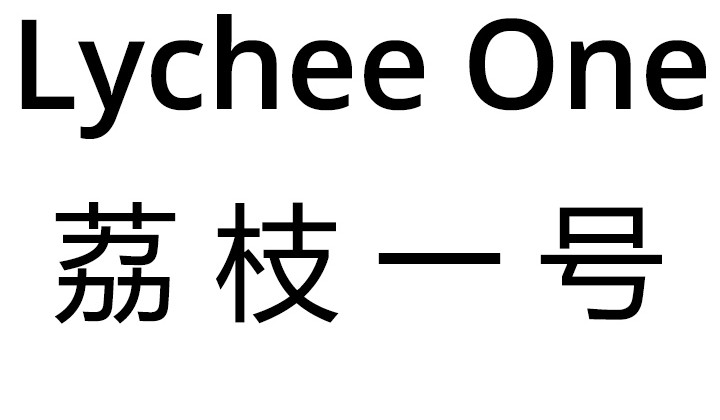1=0.999999999999999…
Aishan Yu
8th July – 3rd August 2017
PV: Friday 7th May, 6–9pm
AISHAN YU: “Everything escapes, everything creates…. “
A woman sits at her table drawing. Hours go by and she drifts in this space alone with the image of her attention. Occasionally other images enter her mind but then they depart as soon as they appear to form. A photograph is just a photograph, a drawing is just a drawing: well at least that is how it appears to be. Is she trying to close the gap that creates such difference? She often ponders on such things but the act of drawing at least has some certainty attached to it. She thinks that drawing might be closer to mediation because it emptiness out thought.
The woman stops drawing and thinks to herself that she might be simply stupid. The drawing of the photograph appears close but is yet so different. Is that what she has discovered. Maybe certain things are always imbued with uncertainty.
She needs to make a mark outside of the drawing. It is as if it could be any mark and yet it has to be a certain type of mark. The tension grows between the image already drawn and the mark yet to come. The image has been determined by appearance whereas the mark registers a non-identical relationship to this. For a brief passage everything is open especially the possibility of failure. If the mark is wrong then the whole drawing falls into ruin. The mark is closer to a gesture to what is unknown and even dangerous. Is a mark then just a mark? As an outcome it might appear so but then that is the nature of appearance: just so. Not this, not that: just so.
Drawing is a mixture of anxiety and desire she thinks to herself, anxiety because each outcome is indeterminate and desire because the indeterminate is opened out by accident that escapes control. A cloud settles over the drawing. Clouds are like moods because they drift. Moods are also like vapours or scents but whatever they seem to drift by or circulate around.
As a child, science, or at least children’s books presenting scientific facts, fascinated her. This composed her imaginary of certainty. The way balls hitting a wall bouncing back at a determinate angle, a comb bending the flow of water due to the static electricity it generated through combing, in fact a whole world of experiment took over. Against this the world of the images was full of ambiguity. She suspected that in the end there was always something out of control but was nonetheless attracted by images that demonstrated control. She liked the image that issued from patterns. Weaving she said was the formative method giving rise to the computer but then everything might be related to weaving.
She has been reading stories by Borges. An image is formed of finding and then losing oneself only to find and lose oneself again as if in a labyrinth. Maybe her drawings compose such a labyrinth. They are certainly closer to a labyrinth than a grid. A grid would lead into representation and in turn knowing. What something looks like and what something is different. There is always a gap and this gap is like a labyrinth: always a case of getting lost and having to start all over again.
Desire comes out of gaps. We might wish to close the circle but then something else interrupts. These drawings are composed out of smooth passages and interruptions. We could say that this is an abstract pattern or diagram. The slow time of the image and the fast time of the mark is part of this condition. Everything that is inscribed in or whatever circulates around or through is recorded within this abstraction. The constant struggle to find and to lose yet again, to suffer anxiety, the interruptions and the continuities: everything is there.
Drawing Paul Klee said is taking a line for a walk but in this case it might a closer to a display of relations. This display is composed out of paradoxes such as getting so close to something and then seeing it spiralling out of sight, repeating something but then discovering a production of difference, relaxing to uncover intensity. Finally we are left alone. Everything has become still and we are simply left alone with all the variables composed.
“Everything escapes everything creates – never alone…”[1]
[1] Deleuze and Guattari, A Thousand Plateaus, 142
Aishan Yu (b. 1981 in Chongqing, China) lives and works in London. She completed her MA at the Slade School of Fine Art in 2008. Exhibitions include By Popular Demand, Mall Galleries, London, 2017; LIKE GOLDEN PETALS SCATTERING, Tenderbooks, London, 2016; Jerwood Drawing Prize, Jerwood Space, London and touring UK,2016; Solo show, MOT International, Brussels,2013; Dog Days I, MOT International, London; Trace 痕迹, Sanhe Museum 三咊美术馆, Hangzhou 杭州, 2010
余艾珊:“万物隐散,万物创生”
一个女人坐在桌前画着画。时间过去了很久,她在她想象中的空间里游荡。一些图像快速闪过,又快速地消失了。一幅照片只是一幅照片,一张画只是一张画,如此而已。她是不是想要弥合两者之间的差别?她总是在沉思着这些,然后继续埋头画画,至少笔下的世界是自己可以掌握的。她认为绘画最接近冥想,因为两者都能帮助人清除脑中的杂念。
这个女人停下手中的笔,觉得自己似乎有点愚蠢。这幅画看起来很接近照片,但是又那么不同。这是否就是她想要寻找的东西。她需要找到能够形容这种感觉的记号。并不确定,可以是任何一种标记,但又必须只能是特别的一种。在这个记号出生之前,某种紧张感在生长着。一切都有可能发生,特别是失败的可能。如果这个记号不对,就前功尽弃。
对于她来说,绘画是紧张感和欲望的混合物,紧张来源于每一个可能的不确定性,而因为不确定而带来的可能性又让人神往。就如同画上飘来一片云。像飘忽不定的情绪。
当她还是小孩子的时候,科学课本令她非常着迷。科学课本建构了她关于客观的想象。球体撞向墙面并以特定的角度弹回,梳子的静电使得水流弯曲退后,整个世界似乎是这样运转的。但是有另一个世界,相反的,充满了不确定性。她总是怀疑到有什么东西是不可控的,但是当我们在试图阐释它的时候,它又被我们阐述它的图像控制了起来。她喜欢那些从图型中得来的图像。组成是使得计算机崛起的要素。她认为也许所有的事物都和编织有关。
她在看博尔赫斯的书。一幅图像在反复寻找中显现自我,又逐渐迷失,只为了再次寻找,就像是走迷宫。看她的画就像是走迷宫。像与不像之间的微妙差异就是迷宫:总有一些迷失的存在,制造里需要重新开始的可能。
欲望来源于差异。我们期望关闭循环但又被某些东西打断。完成这些绘画的过程既平顺又充满干扰。一边是极度的“慢”,另一边是极度的“快”。反反复复对寻找和迷失的追求,去体会焦虑,干扰:就是所需的一切。
保罗克力说过,画画就像是线条的散步,如果是这样,那么也可以说绘画是一系列关系的展示。展示了各种矛盾,比如在无限接近的同时无限消失,在不断重复中发现一系列偏离,在漫不经心中找到极致。到最后我们自己被放在一边。一切静止了,我们自己被放在一边。
“万物隐散,万物创生,再不孤寂。。。”
[1]吉尔·德勒兹, 《千高原》, 142

